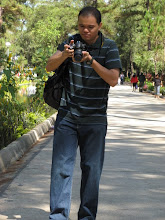Wednesday Liturgy: Right-handed Gestures
ROME, SEPT. 6, 2011 (Zenit.org (http://www.zenit.org)).- Answered by Legionary of Christ Father Edward McNamara, professor of liturgy at the Regina Apostolorum university.
Q: A genuflection is made by bending the right knee (General Instruction of the Roman Missal [GIRM], No. 274), and a sign of cross is made by the right hand. Are these rules absolute? Could a left-handed person make a sign of cross by the left hand or genuflect with the left knee? -- P.T., New Orleans, Louisiana
A: As a southpaw myself, I fully sympathize with our reader's predicament. Thankfully, the stigma attached to left-handedness in former times seems to have all but disappeared. It certainly does not seem to have damaged the prospects of three of the last four U.S. presidents.
From a liturgical standpoint, the indications in the GIRM are merely descriptive of what the vast majority of people will do naturally and indicative of established custom. Since it is usually no great difficulty for left-handed people to perform these tasks, it is better and more decorous that they conform to the general rule of right. Even in civil society the vast majority of left-handed people will proffer the right hand for a friendly handshake. It quickly becomes so natural and spontaneous to use the right hand for genuflecting and blessing that one would have to make a conscious effort to act otherwise.
Personally, I have rarely found being left-handed an obstacle to carrying out the normal liturgical gestures and movements, except possibly when scooping incense from the boat to the thurible.
And yet, there is no deep theological reason for preferring one hand or another. It is a question of practicality and longstanding custom, similar to the different ways of making the sign of the cross, moving the hand from right to left among most Eastern Catholics while the Latin rite traditionally prefers a left-to-right movement.
It is true that there are many biblical passages that speak of the power of God's right hand, and of Our Lord sitting "at the right hand of the Father." The literary figures contained in these texts are significant in many theological contexts and are certainly related to the liturgy's general preference for the use of the right hand. But I think it would be forcing the issue to use them to exclude other possibilities, or convert the use of the right hand into an absolute rule. These texts simply reflect the use of universal symbols of power grounded on the fact that 90 percent of people are right-handed.
If circumstances warrant it, then an alternative mode can be adopted. For example, when Blessed John Paul II broke his arm he felt no qualms in using his left hand to impart the apostolic blessing. Likewise, a person who is unsteady on his legs could genuflect according to whichever member gave greater balance.
Q: A genuflection is made by bending the right knee (General Instruction of the Roman Missal [GIRM], No. 274), and a sign of cross is made by the right hand. Are these rules absolute? Could a left-handed person make a sign of cross by the left hand or genuflect with the left knee? -- P.T., New Orleans, Louisiana
A: As a southpaw myself, I fully sympathize with our reader's predicament. Thankfully, the stigma attached to left-handedness in former times seems to have all but disappeared. It certainly does not seem to have damaged the prospects of three of the last four U.S. presidents.
From a liturgical standpoint, the indications in the GIRM are merely descriptive of what the vast majority of people will do naturally and indicative of established custom. Since it is usually no great difficulty for left-handed people to perform these tasks, it is better and more decorous that they conform to the general rule of right. Even in civil society the vast majority of left-handed people will proffer the right hand for a friendly handshake. It quickly becomes so natural and spontaneous to use the right hand for genuflecting and blessing that one would have to make a conscious effort to act otherwise.
Personally, I have rarely found being left-handed an obstacle to carrying out the normal liturgical gestures and movements, except possibly when scooping incense from the boat to the thurible.
And yet, there is no deep theological reason for preferring one hand or another. It is a question of practicality and longstanding custom, similar to the different ways of making the sign of the cross, moving the hand from right to left among most Eastern Catholics while the Latin rite traditionally prefers a left-to-right movement.
It is true that there are many biblical passages that speak of the power of God's right hand, and of Our Lord sitting "at the right hand of the Father." The literary figures contained in these texts are significant in many theological contexts and are certainly related to the liturgy's general preference for the use of the right hand. But I think it would be forcing the issue to use them to exclude other possibilities, or convert the use of the right hand into an absolute rule. These texts simply reflect the use of universal symbols of power grounded on the fact that 90 percent of people are right-handed.
If circumstances warrant it, then an alternative mode can be adopted. For example, when Blessed John Paul II broke his arm he felt no qualms in using his left hand to impart the apostolic blessing. Likewise, a person who is unsteady on his legs could genuflect according to whichever member gave greater balance.



0 Comments:
Post a Comment
<< Home